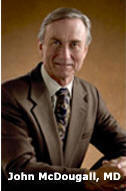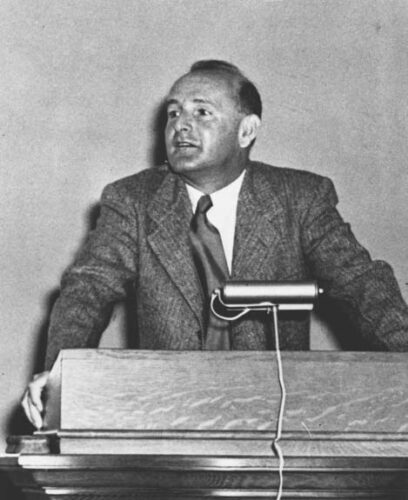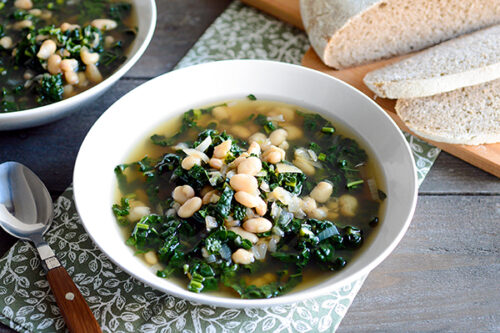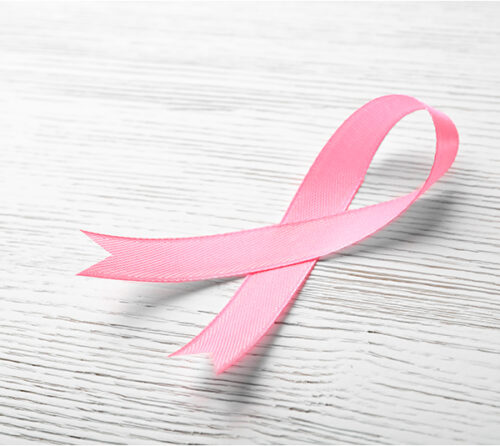Favorite 5 Articles from the December 2006 Newsletter

Favorite Five for December 2006
My favorite articles found in recent medical journals
Low-fat, Plant-food Diet Slows Breast Cancer
Dietary fat, fiber, vegetable, and micronutrients are associated with overall survival in postmenopausal women diagnosed with breast cancer by Archana Jaiswal McEligot in the second issue of the journal Nutrition and Cancer concluded, “These results suggest that in postmenopausal women diagnosed with breast cancer, reduced dietary fat and increased fiber, vegetable, fruit, and other nutrient intakes associated with a plant-based, high-fiber diet improves overall survival after breast cancer diagnosis.” Women with breast cancer consuming the highest fat diet had three times the risk of dying compared to those with the lowest fat intake. All kinds of fat including saturated fat, monounsaturated fats, and polyunsaturated (vegetable) fats were found to reduce survival. Monounsaturated fat from margarine, doughnuts, cookies, cakes, biscuits, muffins, cheeses, and cheese spreads was associated with three to four times the risk of dying. Markers of higher fruit and vegetable intake like vitamin C, folic acid, carotenoids, and lutein were associated with better survival. Note: Nutrients from food, rather than from supplements (pills) meant better survival. There was no association with alcohol intake and overall survival in women with a diagnosis of breast cancer.
Comments: In 1984 the first study showing the benefits of a low-fat, plant-food based diet for women who already had breast cancer was published in a medical journal. I was the author of that study. Since my report there have been 17 more studies published on the effect of diet on breast cancer survival. Common sense dictates, “You should not pour gasoline on a fire.” Since most scientists and doctors believe the Western diet has a major causative role in this disease, then a fundamental therapy recommended to all women must be a healthy diet. Yet, in real life few women are ever told of this connection and to improve their diet.
The course of breast cancer is highly variable with some women dying quickly and some living 35 and more years with their disease. The outcome is determined by the aggressiveness of the cancer pitted against the resistance of the person. The patient’s ability to fend off the cancer is determined largely by her diet. Without any doubt, better nutrition will improve the quality of a woman’s life and the evidence says her years will also be extended. Could five years expected survival time be lengthened to ten or fifteen by improving the vitality of her immune system and the powers of her other cancer-fighting defenses? I believe so—and this is one more study that supports my beliefs.
Recommending that women with breast cancer eat healthier should be easy for doctors. After all, this therapy does not cause nausea, vomiting, or any loss of hair. This is not like chemotherapy costing thousands of dollars. Plus, a healthy diet will also reduce the risk of most diseases from heart attacks to gallbladder disease.
Weight loss follows the adoption of a low-fat diet, offering another survival edge. Trim women with breast cancer are known to live much longer than overweight women. Another cost-free, side-effect-free habit, exercise, has been shown to reduce the absolute risk of death for women with breast cancer by 6% over 10 years. Thus, the survival benefits achieved from a healthy diet and an exercise program exceed those of all other commonly prescribed therapies: surgery, radiation, and chemotherapy. But, how many patients know that?
1) Jaiswal McEligot A, Largent J, Ziogas A, Peel D, Anton-Culver H. Dietary fat, fiber, vegetable, and micronutrients are associated with overall survival in postmenopausal women diagnosed with breast cancer. Nutr Cancer. 2006;55(2):132-40.
2) McDougall J. Preliminary study of diet as an adjunct therapy for breast cancer. Breast 10:18, 1984.
Mammograms Fail Women from Age 40 Years
Effect of mammographic screening from age 40 years on breast cancer mortality at 10 years’ follow-up: a randomised controlled trial by Sue M. Moss in the December 9, 2006 issue of the Lancet found that, “Although the reduction in breast-cancer mortality observed in this trial is not significant, it is consistent with results of other trials of mammography alone in this age-group. Future decisions on screening policy should be informed by further follow-up from this trial and should take account of possible costs and harms as well as benefits.” In real numbers, this study found that after an average of 10.7 years of screening there would possibly be one less death for every 2512 women undergoing annual mammography.
Comments from an accompanying editorial by Benjamin Djulbegovic brought up these important concerns about mammography. “False-negative screens might lead to inappropriate reassurance and delays in diagnosis, whereas false positives might result in unnecessary biopsies and additional imaging studies. However, the main harms associated with screening mammography relate to potential death from radiation-induced breast cancer. Although the overall reduction in death from breast cancer during the 10–15 years’ follow-up in trials of screening mammography is clear, the anticipated peak for radiation-induced breast cancer occurs some 10–20 years after exposure, and risk might remain increased throughout a woman’s life. A model estimated that starting screening mammography at age 40 years is justified if associated with decreased relative risk of death from breast cancer by 20% or more—assuming that this theoretical model is correct and accurate.” (This study showed a nonsignificant relative risk reduction of 17%—therefore, mammography is not justified.)
“Although the best estimates of harms from screening mammography seem to be less than the benefits, they remain too uncertain to conclude with a high level of confidence that screening mammography in this age-group is associated with a net benefit. Every woman, with her physician’s guidance, should decide whether regret will be greater if she develops breast cancer that could have been detected earlier by screening mammography, or if she develops breast cancer later in life as a result of screening mammography itself.”
Comments: The burden of proof resides with those recommending the tests and treatments. This study clearly states the proof of benefits is lacking. The reason mammography fails women is because this measurement is crude and on average detects cancers only after they have been growing 8 to 14 years—by this time if the lump detected is truly cancer—often referred to as invasive cancer—then the disease has spread to the rest of the body and is unreachable by surgery or radiation. Mammography harms a woman by finding “disease” that would have never threatened her life. In many cases mammography detects a condition called ductal carcinoma in situ (DCIS). This is not cancer, but when detected it is still treated aggressively with surgery and radiation. DCIS rarely turns into a life threatening cancer. Thus, for women for whom a cure is possible (those with DCIS) early detection and treatment are not necessary, while for women for whom cure is necessary (those with invasive cancer), this goal is rarely possible because the disease has already spread beyond the boundaries reached by local treatment (radiation and surgery).
After 10 disappointing trials, what I keep hearing from my colleagues and many women is, “Mammography remains the best opportunity doctors have to offer women.” But that’s not true; there is something better for preventing breast cancer, which is an enthusiastic recommendation to change their diet.
1) Moss SM, Cuckle H, Evans A, Johns L, Waller M, Bobrow L; Trial Management Group. Effect of mammographic screening from age 40 years on breast cancer mortality at 10 years’ follow-up: a randomised controlled trial. Lancet. 2006 Dec 9;368(9552):2053-60.
2) Djulbegovic B, Lyman GH Screening mammography at 40-49 years: regret or no regret? Lancet. 2006 Dec 9;368(9552):2035-7.
Raw Food Vegetarian Diet Protects Us from Cancer
Long-term low-protein, low-calorie diet and endurance exercise modulate metabolic factors associated with cancer risk by Luigi Fontana published in the December 2006 issue of the American Journal of Clinical Nutrition found that a low-protein, low-calorie diet and exercise lower hormones and growth factors that increase a person’s risk of developing and dying from cancer. This research compared three groups, each consisting of 21 people. The first group selected from members of the St. Louis Vegetarian Society ate uncooked and unprocessed plant foods; the second group selected from local running clubs ate the Western diet but ran an average of 48 miles a week; the third group was made up of sedentary people who ate the Western diet. The lowest levels of the very powerful cancer-promoting growth hormone, Insulin-like Growth Factor-1 (IGF-1) were found in the raw food group. These same healthy eaters had low levels of C-reactive protein, insulin and cancer-promoting sex hormone activity.
Comments: This study demonstrates the health benefits of a plant food based diet and some people will argue the importance of the diet consisting of all raw foods. Their foods choices were raw vegetables, fruits, nuts, seeds, grains, and cereals, and olive oil; and they strictly avoided processed and refined foods, and foods of animal origin. As this and other studies have demonstrated, a diet of uncooked plant foods is far healthier than the American diet, and can reverse and prevent many diseases.
From the title of the article you should notice that the raw food group ate a “low-protein, low-calorie diet,” but fat is not mentioned. This is because this raw food diet was very high in fat—actually 43 percent of the calories were from fat—compared to 34 percent from fat for those on the Western diet. I do recommend people eat some uncooked foods, but I do not recommend an all raw food diet, because this kind of eating almost obligates a person to eat a high-fat, high-sugar diet. Most of the people following the McDougall Diet want to lose weight, which is one important reason to minimize foods naturally high in fat—the liberal use of nuts, seeds and avocados makes weight gain almost effortless. The liberal use of simple sugars from fruits and juices also makes weight loss harder.
Similar benefits in IGF-1, C-reactive protein, and sex hormone activity are seen with a diet centered around cooked starches, such as I recommend. A starch-based diet is low in fat and calories—both qualities of food associated with cancer promotion. Lack of compliance is the biggest stumbling block to dietary change. My experience has been an all raw food diet is harder to follow than a diet with cooked foods. This is one reason no large population of people in recordable history has ever followed a raw food diet. My experience has been that a diet of cooked potatoes, sweet potatoes, rice, and/or beans, with fruits and vegetables is easily followed. That is one important reason why all populations living on plant food based diets throughout history have consumed most of their calories from cooked starches.
1) Fontana L, Klein S, Holloszy JO. Long-term low-protein, low-calorie diet and endurance exercise modulate metabolic factors associated with cancer risk. Am J Clin Nutr. 2006 Dec;84(6):1456-62.
2) McCarty MF. A low-fat, whole-food vegan diet, as well as other strategies that down-regulate IGF-I activity, may slow the human aging process. Med Hypotheses. 2003 Jun;60(6):784-92.
3) Roberts CK, Chen AK, Barnard RJ. Effect of a short-term diet and exercise intervention in youth on atherosclerotic risk factors. Atherosclerosis. 2006 Oct 18; [Epub ahead of print]
4) Tymchuk CN, Tessler SB, Barnard RJ. Changes in sex hormone-binding globulin, insulin, and serum lipids in postmenopausal women on a low-fat, high-fiber diet combined with exercise. Nutr Cancer. 2000;38(2):158-62.
Low-carb, High-protein Diets Reduce Survival
Low-carbohydrate-high-protein diet and long-term survival in a general population cohort by Antonia Trichopoulou of the University of Athens Medical School published in the on-line version of the European Journal of Clinical Nutrition found that “higher intake of carbohydrates was associated with significant reduction of total mortality, whereas higher intake of protein was associated with nonsignificant increase of total mortality” with respect to both cardiovascular and cancer mortality. This study involved 22,944 healthy adults, under observation from 1993 to 2003, whose diets were assessed through questionnaire. The authors make a point of saying proteins of plant origin are not the problem and “are generally considered innocuous, if not beneficial, to health.”
Comments: After observing the diets of people for a decade this report finds eating more protein and less carbohydrate will shorten your life. In more practical terms, animal products shorten life—plant foods will help you live longer. A daily increase of 15 grams of protein and a decrease of 50 grams of carbohydrate was associated with a 22% increase in overall mortality. In practical terms this could translate into 1 1/2 ounces more of chicken and a decrease of one potato could shorten your life by years. This report is one more lesson that demonstrates that people who have made the mistake of following diets like Atkins, South Beach, and the Zone can expect to live significantly shorter lives.
1) Trichopoulou A, Psaltopoulou T, Orfanos P, Hsieh CC, Trichopoulos D. Low-carbohydrate-high-protein diet and long-term survival in a general population cohort. Eur J Clin Nutr. 2006 Nov 29; [Epub ahead of print]
Herbal Valerian for Sleep
Valerian for sleep: a systematic review and meta-analysis by Stephen Bent published in the December 2006 issue of the American Journal of Medicine found that, “The available evidence suggests that valerian might improve sleep quality without producing side effects.” This publication presented a systematic review of randomized, placebo-controlled trials of valerian for improving sleep quality. Sixteen eligible studies examining a total of 1093 patients were identified. Dosages ranged from 225 mg to 1215 mg per day.
Comments: Approximately one-third of the Western population reports difficulty sleeping and many of these people have either suffered with sleeplessness and/or have become dependent upon alcohol or sleeping pills. Valerian (Valeriana officinalis), made from an extract of the root and stems of this flowering plant, is sold as a dietary supplement in the US. There is no agreement on the mechanism of action, but chemicals in the brain may be changed by active ingredients in valerian. This sleeping aid can be used as a tea and is commonly sold as liquid tinctures and as extracts put into capsules. In addition to treating insomnia, it has been used for nervousness, trembling, headaches, heart palpitations, and gastrointestinal spasms. Dosages of standardized extracts commonly used are 450 to 900 milligrams. Side effects are extremely rare; there is no potential for addiction and no hangover. Therefore, anyone with problems sleeping should give valerian a try.
1) Bent S, Padula A, Moore D, Patterson M, Mehling W. Valerian for sleep: a systematic review and meta-analysis. Am J Med. 2006 Dec;119(12):1005-12.
Recommended Articles

The Scientific Publications of Dr. Walter Kempner: Creator of the Rice Diet

Making the Change to a Healthy Lifestyle Work, Part 2 - Meal Planning





